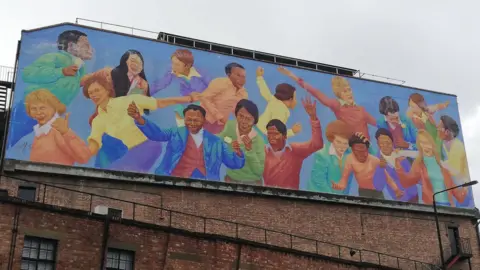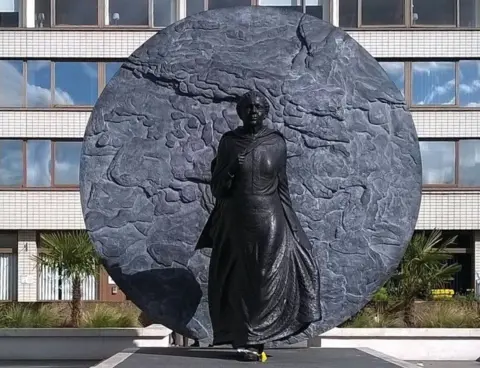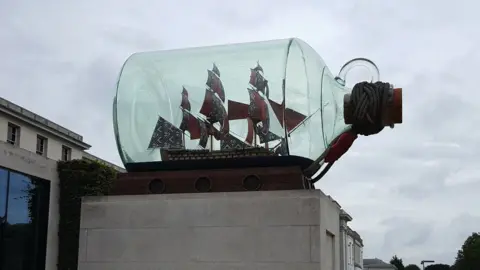Windrush Day: 'Windrush is the big thing in the black community'
 Avril Nanton and Jody Burton
Avril Nanton and Jody BurtonFor Avril Nanton and Jody Burton, it was important that their new guidebook covering London's black history was released on Windrush Day.
"It's something that we are very glad to have as black people," Avril explains. "Windrush is the big thing in the black community."
The pair are both of Dominican heritage, their parents having travelled to London as part of the Windrush generation.
Jody was born in east London after her parents moved over in the late 1950s.
"My mum was a teacher in Dominica in a small school and my dad was a jeweller, but here they had to take lesser jobs.
"The streets weren't paved with gold, it was really hard work. They really did face a lot of prejudice," she says.
 Avril Nanton and Jody Burton
Avril Nanton and Jody BurtonAs for Avril, she was born in Dominica but in 1965, at the age of seven, flew alone to the UK where she joined her mother whom she had not seen for five years.
"It was a bit of a shock and the first thing she did was make me put a coat on because you're thinking, you're coming from the Caribbean where it's lovely and warm and you're wearing this thin dress and you arrive and you think: 'My God it's cold here!'"
The pair met on a walking tour run by Avril which takes in London's black history. Three years ago they began work on Black London: History, Art and Culture in over 120 Places.
The book tells the stories of key figures and events across the centuries, many of which are marked by statues, plaques and murals across the capital.
Subjects covered include people and events from the 16th Century like John Blanke, a trumpeter in Henry VIII's court, to the modern day and the Black Lives Matter movement.
 Avril Nanton and Jody Burton
Avril Nanton and Jody Burton"We felt that a book like this was needed," says Avril.
"We decided to turn it into a guidebook because we realised there weren't any guidebooks available - not black history guidebooks, anyway."
The book comes a year after the death of George Floyd and the consequent growth of the Black Lives Matter movement, something Jody believes has ignited many people's interest in the past.
"At the moment there's a big discussion and debate about history and I think it really is time for there to be a more inclusive history which tells all stories really from that history and not just one narrative," she says.
 Avril Nanton and Jody Burton
Avril Nanton and Jody BurtonHowever, neither agrees with calls to remove statues of controversial figures, as happened with a monument of slave trader Edward Colston in Bristol last year.
"For me personally, as statues are my living if you take them down it means I don't know about them, I can't talk about them, I have no history about them," explains Avril, who runs a business giving guided tours covering black history in London.
"I don't even think they should go into museums because if they're in a museum and I don't know about them, I can't talk about them."
She believes the statues should stay up but with something to provide context about the figure.
"It's important to know what that person did, how it worked, what they're all about," she says.
 Avril Nanton and Jody Burton
Avril Nanton and Jody BurtonJody agrees with the need to give people a more rounded knowledge of the past, something she hopes their book will provide.
"You can't tell part of the story and not all of story so it's really just being inclusive.
"You just hope people will learn - I mean, I've learnt a lot. There's a lot I didn't know, plus there's a lot we're still discovering," she says.
Black London: History, Art and Culture in over 120 Places is released on Tuesday.
